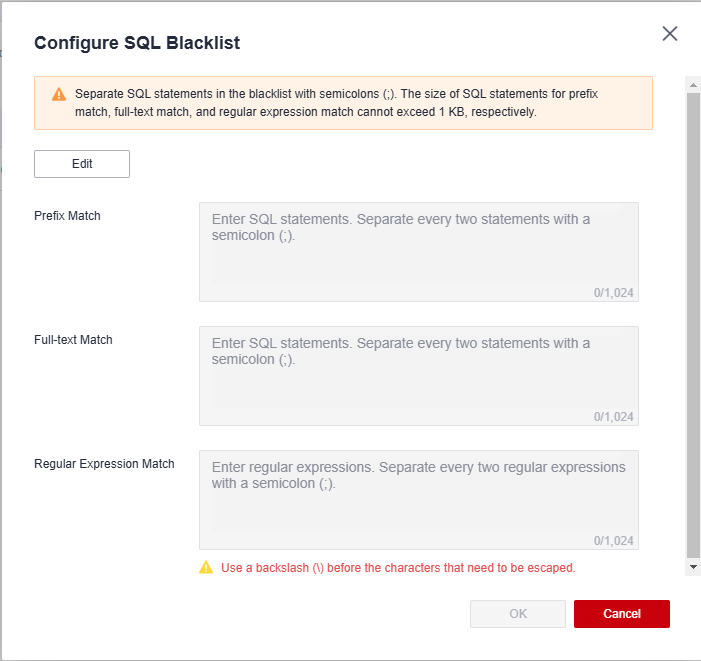Help Center/
Distributed Database Middleware/
User Guide/
Schema Management/
Configuring a SQL Blacklist
Updated on 2025-06-25 GMT+08:00
Configuring a SQL Blacklist
To prevent some SQL statements being executed, you can configure a blacklist and add those statements to it.
SQL statement concurrency control aims to keep DDM instances running stably even if there is a sudden increase in concurrent SQL statements.
Procedure
- Log in to the DDM console.
- In the instance list, locate the instance that you want to configure a SQL blacklist for and click its name.
- On the displayed page, in the navigation pane on the left, choose Schemas.
- In the schema list, locate the schema that you want to configure a blacklist for and click More > Configure SQL Blacklist in the Operation column.
Figure 1 Configuring SQL blacklist

- In the displayed dialog box, click Edit, enter the required SQL statements or regular expressions in prefix match, full-text, and regular expression match boxes, and click OK.

- Prefix Match: Enter SQL statements that contain keywords such as DROP or DELETE and are not allowed by the current schema.
- Full-text Match: Enter full-text SQL statements that are not allowed by the current schema. Multiple spaces and line breaks will not be treated as if they were replaced or truncated as a single space.
- Regular Expression Match: Enter regular expressions that are not allowed by the current schema.
- Separate SQL statements in the blacklist with semicolons (;). The size of SQL statements for prefix match, full-text match, and regular expression match cannot exceed 1 KB, respectively.
- If you want to clear all the SQL statements in prefix match and full-text match areas, clear them separately and click OK.
Parent topic: Schema Management
Feedback
Was this page helpful?
Provide feedbackThank you very much for your feedback. We will continue working to improve the documentation.See the reply and handling status in My Cloud VOC.
The system is busy. Please try again later.
For any further questions, feel free to contact us through the chatbot.
Chatbot





